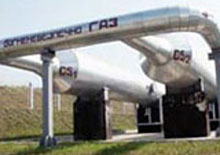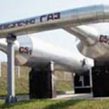
RUSSIA TO INCREASE PURCHASE PRICES FOR CENTRAL ASIAN GAS: OUTLOOK AND IMPLICATIONS
Publication: Eurasia Daily Monitor Volume: 5 Issue: 50
By:

Moscow has decided to increase significantly the price of gas it purchases from Turkmenistan, Kazakhstan, and Uzbekistan. As announced on March 11 and confirmed on March 13, Gazprom has agreed with Turkmengaz, KazMunayGaz, and Uzbekgaz to raise that price in 2009 to levels nearer the average price paid by European Union customers to Gazprom in 2008 (RIA-Novosti, Interfax, March 11, 13).
While the detailed price-setting formula for Russian purchases of Central Asian gas remains under discussion, that price is anticipated in the range of $200 to $230 per 1,000 cubic meters, depending on the points of origin in the three countries and the points of entry into Russia. By comparison, Gazprom’s current contract price for Turkmenistan — whose export to Russia and overall export potential are the largest by far — is $150 per 1,000 cubic meters during the first half of 2008 and $180 for the second half.
Thanks to its monopsony, Gazprom uses part of the Central Asian gas volumes for Russia’s internal consumption, thereby freeing up equivalent volumes of Russian gas for sale at higher prices to EU countries. Russia also re-sells growing volumes of Central Asian gas in Europe as “Russian” gas. With both methods, Russia is pocketing the differential.
At first sight, Gazprom’s consent to increase its purchase price for Central Asian gas should significantly reduce that lucrative differential for Russia. This effect seems far from certain, however. Average prices for gas in the EU are expected to rise from some $280 in 2007 to at least $350 in 2008, mainly as a result of the rise in oil prices, to which gas prices are pegged. Thus, Gazprom should still be able to profit from the price differential between Central Asian and European gas prices.
However, that once-yawning differential has begun to narrow, because Central Asian countries are now in a far stronger position to bargain with Gazprom. With Russia’s internal gas production stagnant, the main operating gas fields past their peak, chronic underinvestment, and long delays in opening new fields, and rising internal consumption, Russia seems set to experience gas shortfalls both internally and for export. To cover the looming gas deficit, Russia must increase imports from and prices to Central Asian countries. This trend has only begun with the price increase just announced for Central Asian gas.
The implications of this incipient trend can be momentous.
For Ukraine, it means at the very least another jump in the price of Russian-delivered Turkmen gas, on which Ukraine ’s economy is largely based. Gazprom intends to enter the Ukrainian market directly, in view of rising prices for Central Asian gas, according to company spokesman Sergei Kupryanov. It can now eliminate the middleman company RosUkrEnergo, whose raison d’etre has been to profit from the wide price gap between Central Asian gas and Russian gas. On March 13, Gazprom president Alexei Miller and Naftohaz Ukrainy president Oleh Dubyna agreed to remove intermediaries and open Ukraine’s industrial market — the country’s most lucrative — for Gazprom to operate directly there, further squeezing Naftohaz (Interfax, March 13).
The European Union and the United States will find it even more difficult to win over Turkmenistan for a trans-Caspian pipeline, once Russia raises its purchase price for Turkmen gas significantly. With this trend now under way and set to continue, Ashgabat will find it financially advantageous and politically safe to deliver growing volumes of its gas to Russia. Thus it will go ahead with the joint project to expand the capacities of pipelines to Russia, such as the northbound Caspian littoral pipeline, which preempts the proposed trans-Caspian westbound pipeline.
This would mean, in turn, cutting off the Western-backed Nabucco project from Turkmen and other Central Asian gas. Nabucco recently experienced defections from several countries downstream. Those defections are not yet irreversible; but a perceived loss of chances to access Turkmen gas — following Moscow’s price increase for that gas — can render those defections irreversible. Against this backdrop, the EU’s recently appointed Nabucco project coordinator, Jozias van Aartsen, is now set to accept the position of mayor of The Hague after only five months with Nabucco, according to Dutch reports.
The United States missed the chance — and the EU seemed oblivious to the chance altogether — during the last five years to offer Central Asian countries more attractive commercial terms for their gas than Russia offered them. Now with Russia’s price increase for Central Asian gas, and the potential for this trend to continue, any incentive for Turkmenistan and the other countries to join Western-backed projects can correspondingly diminish.
Russia’s growing intake of Central Asian gas can strengthen its dominance in European energy markets, despite Russia’s own stagnant production. By the same token it can lend impetus to the formation of a Russian-led cartel of gas exporting countries. Moscow does not intend to include the Central Asian countries in the proposed cartel. Rather, it plans to use Russian control of Central Asian gas so as to maximize Russia’s influence within the proposed cartel.
With the adverse trends under way, many EU officials experience “a sense of failure” and even “near despair” — albeit “behind closed doors” — over the failure to develop a common energy policy in response to Russia’s strategic advances (Financial Times Deutschland, March 6). And U.S. Secretary of State Condoleezza Rice’s recent promise, under Senate prodding, to look for a high-level U.S. figure to coordinate energy policy in Central Asia — which was not done since 2001, while the pre-existing apparatus was discarded — seems too little and too late.




